Puglia, the all-in-one cycling tourism destination in Italy
The panoramic roads Mare-Monti roads are the paradise for road cycling, the the forest tracks of the Gargano National Park, an open-air bike park, the quiet roads in the Itria Valley all adorned with trulli and drystone walls, and the wind on your face in the Salento Peninsula surrounded by two seas.
Genuine hospitality, mild climate and Mediterranean diet complete the recipe of your next cycling vacation on bike in Puglia.
Table of contents
You'll find the link to visualize the maps and download the GPS tracks at the bottom of this article
Adriatic Cycle Route
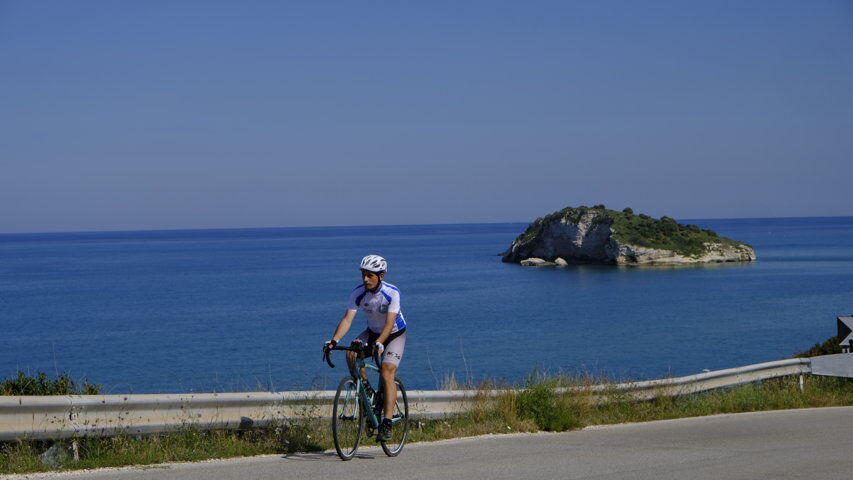
More than 500 km “nel blu dipinto di blu” …
The Adriatic Cycle Route is a national route of about 1300 km connecting Trieste with Santa Maria di Leuca, the southernmost point in Apulia. The Apulian stage, more than 500km long, offers a dramatic variety of breathtaking views.
From Lesina, the Adriatic Cycle Route circumnavigates the Gargano peninsula.
Not to be missed is the Foresta Umbra in the heart of the Gargano National Park and the shrine of Monte Sant’Angelo, both UNESCO sites. The Sun Mountain in North Apulia will captivate not only of serious cyclists but also of culture and nature enthusiasts.
But Apulia is a pretty long region, and. after ther Gargano, one still needs around about 300 km before getting to the Leuca cape! In the central Apulia you will ride on countryside backroads, with just a few tractors and cars in sight. Bari and its coast offer plenty of interesting sites. Just to mention a handful: Bari, Polignano a Mare and Monopoli, the important Egnazia archeological site nearby Fasano and Cisternino, which can be reached with a short detour from Torre Canne and Savelletri. While heading back to the seaside, you cannot miss a visit to Ostuni, the White City with its limewashed houses. As the earth becomes red, you enter the Salento peninsula past Lecce, Otranto and finally reach Santa Maria di Leuca.
Once in the most southern point of the heel of the boot, you can reach the train station of Gagliano del Capo, which is 6 km north of Santa Maria di Leuca.
Useful tips: Better avoiding the hottest months of July and August when the seaside is crowded and the traffic is high.
The route is in general flat, except in the Gargano and between Otranto and Santa Maria di Leuca.
- Lesina
- Rodi Garganico
- Peschici eVieste
- Mattinata e Manfredonia
- Trinitapole Margherita di Savoia
- Barletta e Trani
- Bari
- Polignano a Mare
- Monopoli
- Ostuni
- Savelletri e Torre Canne (Fasano)
- Brindisi
- Lecce
- Otranto
- Santa Maria di Leuca
Apulian Acqueduct Cycle Route
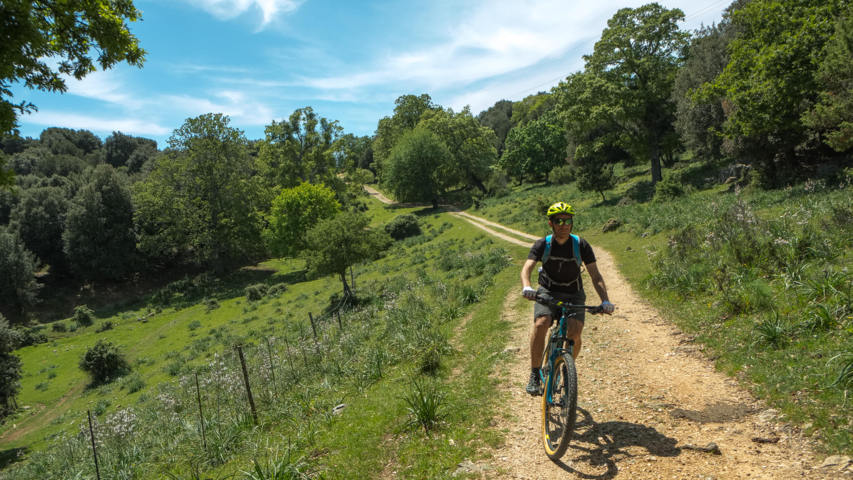
Following the rythm of water on the first greenway in South Italy
The route starts in Alta Irpinia in Campania at the Sanità sources in Caposele. In Campania and partly also in the Basilicata Region, the monumental aqueduct canal flows in a deep gallery, so for the first part of the itinerary you won’t cycle directly on the greenway, but on low traffic roads.
Once crossed the Apennine, in Apulia you will cycle on the first stretches on the aqueduct service track. Most of it is still a wild dirt road, not yet rebuilt as a cycle path, but in Valle d’Itria, a first stretch of about 20 chilometers, from Locorotondo to Ceglie Messapica and Villa Castelli, is open as a greenway for cyclists and hikers.
The aqueduct builds a backbone of the inner Apulia and only at the end you will see the sea, where in Santa Maria di Leuca, the waterworks ends with a monumental waterfall.
Useful tips: The website www.cicloviadellacquedotto.it is a mine of information. If you understand Italian, you may find useful this book.
- Caposele (Campania)
- Calitri (Campania)
- Venosa (Basilicata)
- Spinazzola
- Castel del Monte
- Ruvo di Puglia
- Cassano Murge
- Gioia del Colle
- Alberobello
- Locorotondo
- Grottaglie
- Nardò
- Matino
- Santa Maria di Leuca
EuroVelo 5 Via Romea Francigena
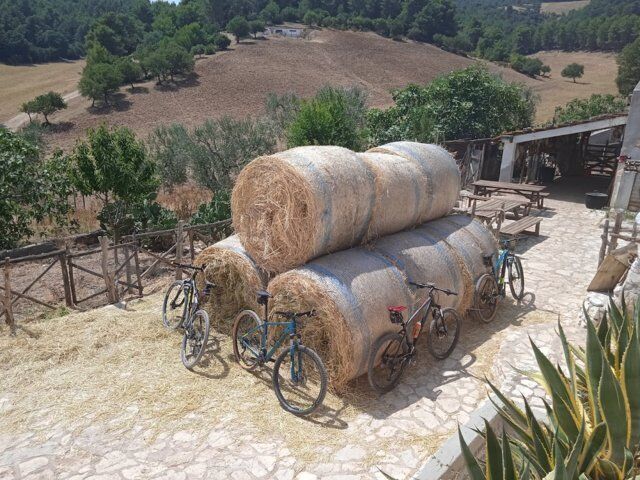
On the pilgrims’ footsteps from Rome to the East
The Romea Francigena Cycle Route EuroVelo 5 starts Canterbury in England . The Italian stretch, more than 1500 km, offers cycling tourists an impressive manifold sequence of breathtaking panoramas.
The cycling route is different from the walking one: while the latter follows the Via Traiana past Bari and the coast, the former goes back to the Via Appia Antica past Taranto and Matera.
As a starting point, the pilgrim can choose the Arco di Traiano in Benevento in the Campania region, a city full of monuments of the Romans, the Samnites and Longubards. The Appian Ways went amid Irpinia and Daunia, turning towards Basilicata on the footsteps of the former volcano of the Vulture where it meets cities full of history like Melfi with its Normann castles tied to the personality of Fredrick II and Venosa, Horace’s hometown, the Carpe Diem poet. Quindi, la Bradano rift valley which separates the Apennine Lucano from the plateau of the Alta Murgia National Park and finally reaches Gravina, Altamura and Matera. After Taranto, the Spartan city and ancient Capital of Magna Graecia, the land becomes red in the higher part of Salento from Oria to port of Brindisi, where the Roman Way ended with two monumental column.
Useful tips: Most of the route consists of low-traffic roads, except for the city of Taranto, where it is strongly recommended to take the train to enter and exit the city.
- Benevento (Campania)
- Ariano Irpino (Campania)
- Venosa (Basilicata)
- Gravina
- Altamura
- Matera
- Castellaneta Grotte
- Taranto
- Grottaglie
- Oria
- Mesagne
- Brindisi
Bari – Matera
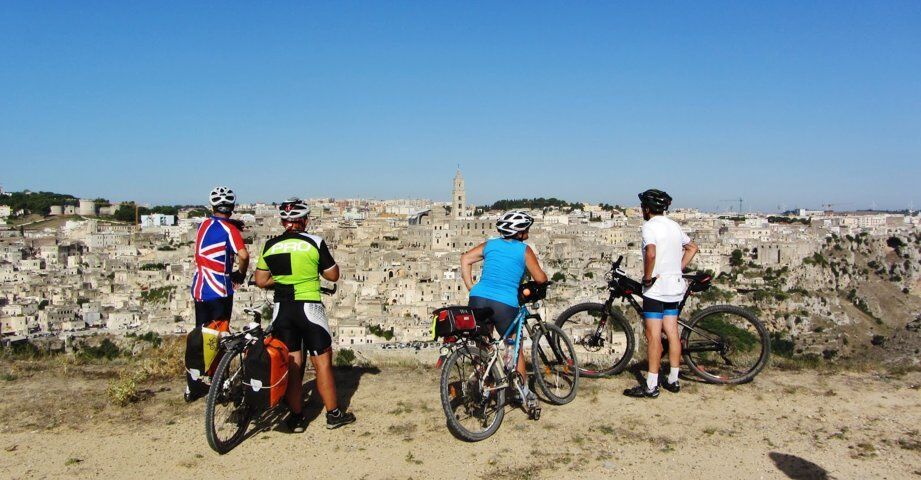
From Bari to Matera crossing a landscape where the time has stopped at the Ninethinpd Century
The Bari-Matera cycle route is a 80 km long itinerary which allows in one or two day to reach Matera, “the city of the stones” (Sassi di Matera), UNESCO heritage. You will cycle past a wood of almond and oak trees, the pastures of the Alta Murgia National Park. We recommend you stop in Altamura, the city of the best bread in Italy and taste a slice of focaccia.
- Bari
- Grumo Appula
- Gravina and Altamura
- Matera
Territories
Puglia is a state of mind, but three are the cycling territories
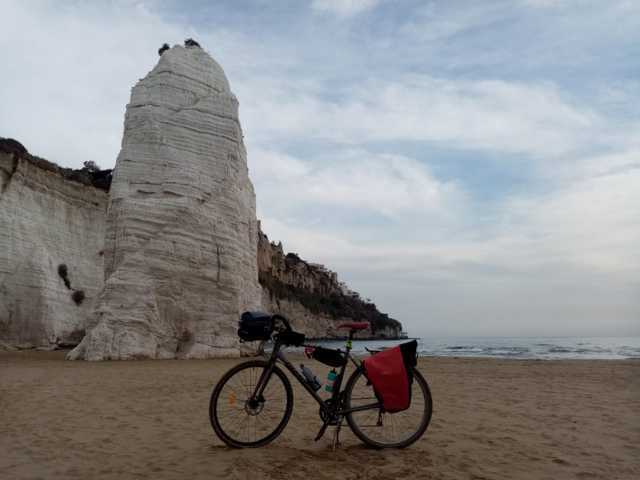
Gargano
The Mountain of the Sun: relax and adventure at the same time
Between a tour and the other, the Gargano also offers ideal places for an outdoor break, farms, trabucchi and mountain shelters, to taste the traditional dishes, orecchiette flavored with turnip greens in spring or courgettes talli in summer, hornbeam and chicory, pancotto and lampascioni. The authenticity of the flavors is also found in dairy products such as caciocavallo podolico, pecorino canestrato and cheeses made with Garganic goat milk, but also in baked products that are particularly good on the “Mountain of the Sun”: the large bread wheels produced in the wood-burning ovens of Monte Sant’Angelo, the typical focaccia of San Marco in Lamis and the paposcia of Vico.
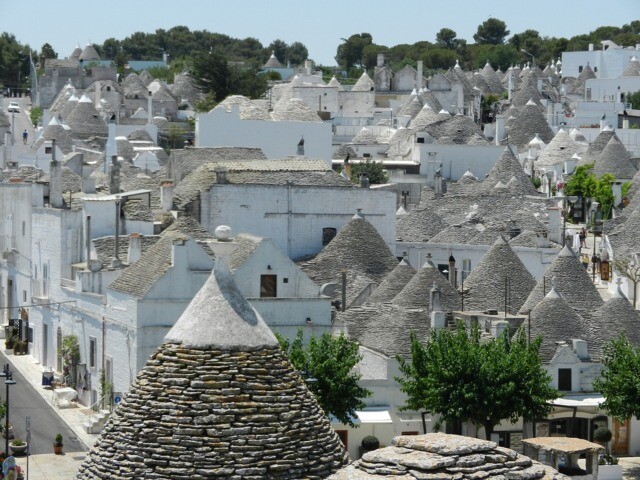
Valle d'Itria
The land of trull is the "slow" landscape par excellence thank to its "strade bianche"
The Itria Valley and the Trulli Coast will surprise you with its rural arteries adorned with trulli and dry stone walls, perfect for a cycling holiday especially in spring and autumn. A landscape designed by the man in perfect harmony with the nature of a widespread forest of olive and oak trees. The green heart of the Itria Valley is made up of three pretty towns: Martina Franca, Cisternino and Locorotondo. By Murgia and Trulli Coast, however, we also mean the surrounding area: Alberobello, Ostuni, Castellana Grotta, Ceglie Messapica, Fasano and Monopoli.
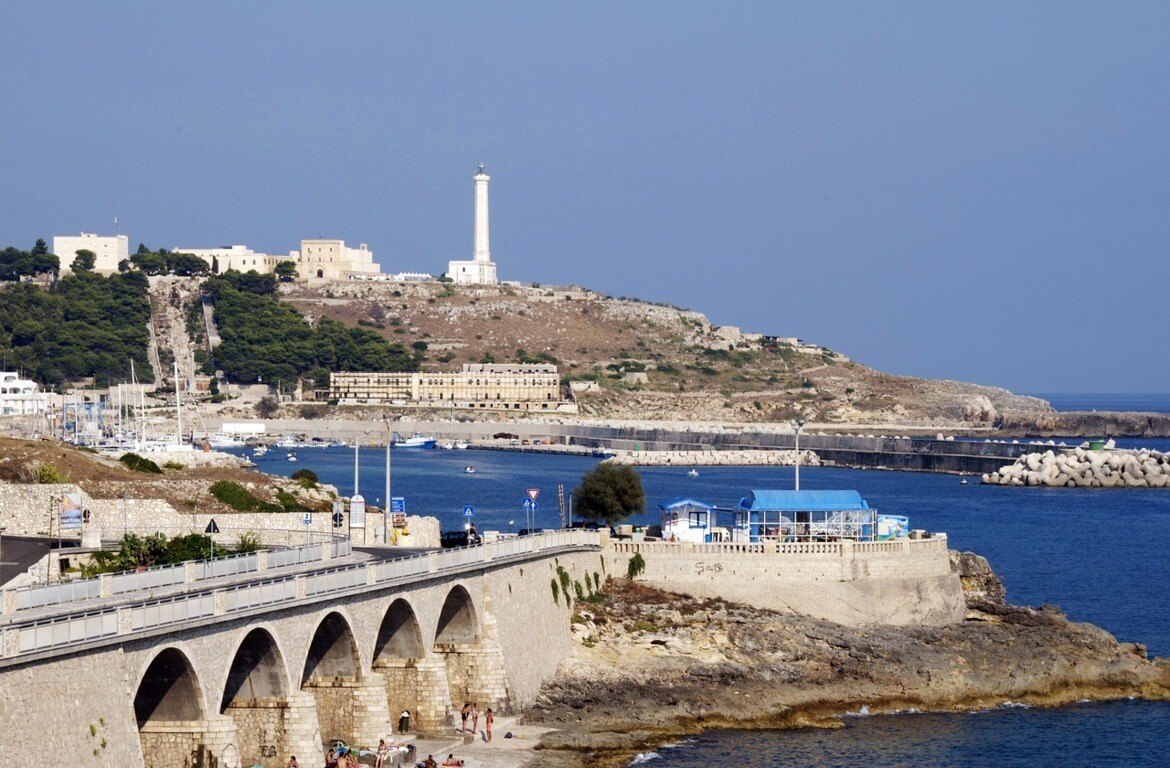
Salento
Sun, sea and wind ... and a hinterland rich in folklore and traditions
The Giro del Salento is an itinerary almost entirely on asphalted roads with low or no traffic volume, except in large population centers. We start from Lecce, capital of the Baroque of Salento, and hub of the Adriatic Cycle Route, to head towards the Ionian coast after visiting the ancient Rudiae and the towns of Copertino and Nardò. We continue touching the beaches of Porto Selvaggio and Santa Maria al Bagno up to the “beautiful city” Gallipoli. From here the itinerary returns inland to reach Alezio, the town home to the museum of Messapian civilization, Sannicola, Galatone and Galatina, where it is possible to admire the frescoes of the Basilica of Santa Caterina d’Alessandria. Now in the cradle of tarantism, we push towards Greece to Melpignano towards the Adriatica. From Otranto we travel along the Adriatica cycle route passing through the Le Cesine Oasis and the medieval village of Acaya, returning to Lecce.
Roberto Guido’s guidebook is a good reading if you understand Italian: “In bici sui mari del Salento”.

